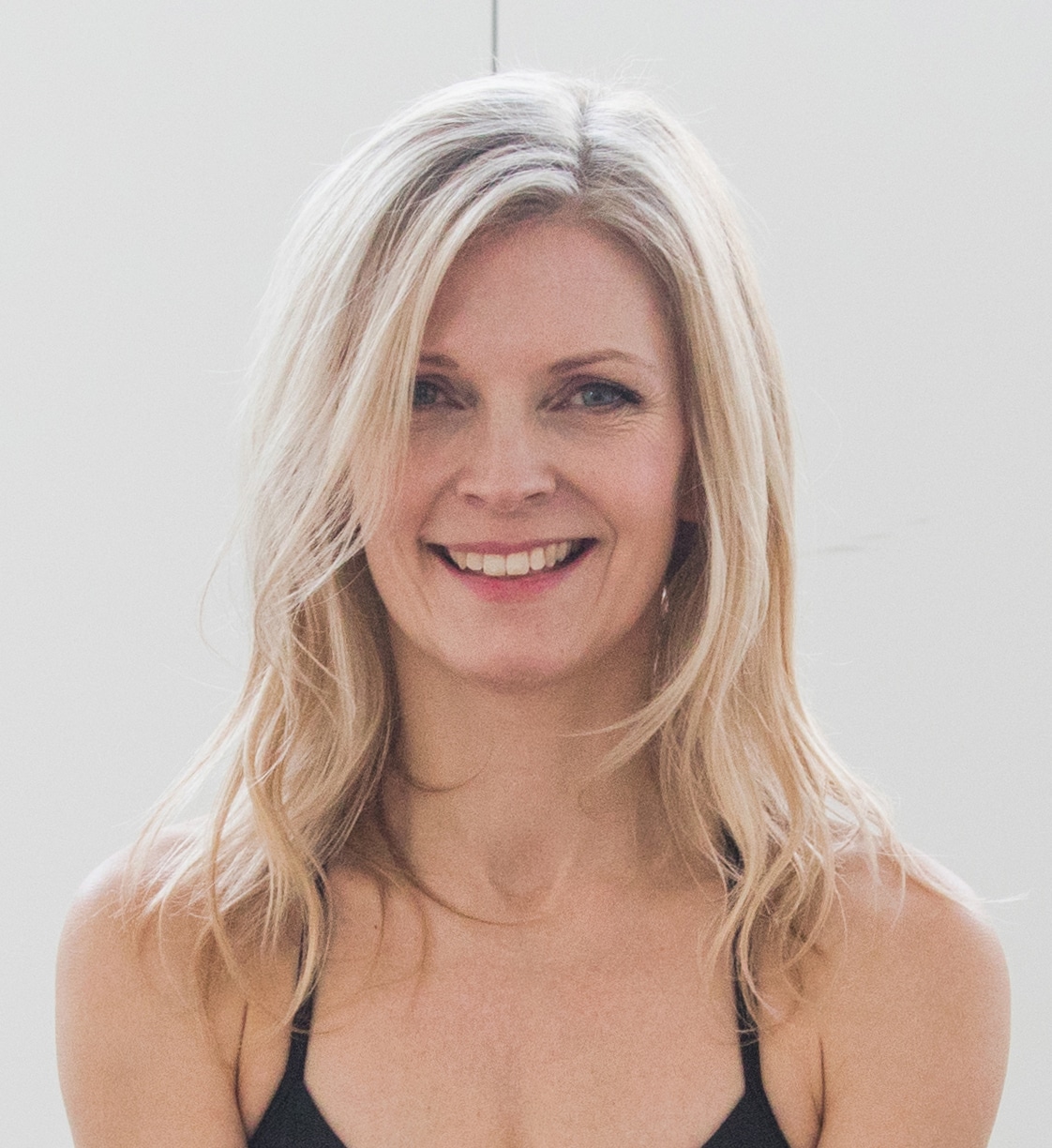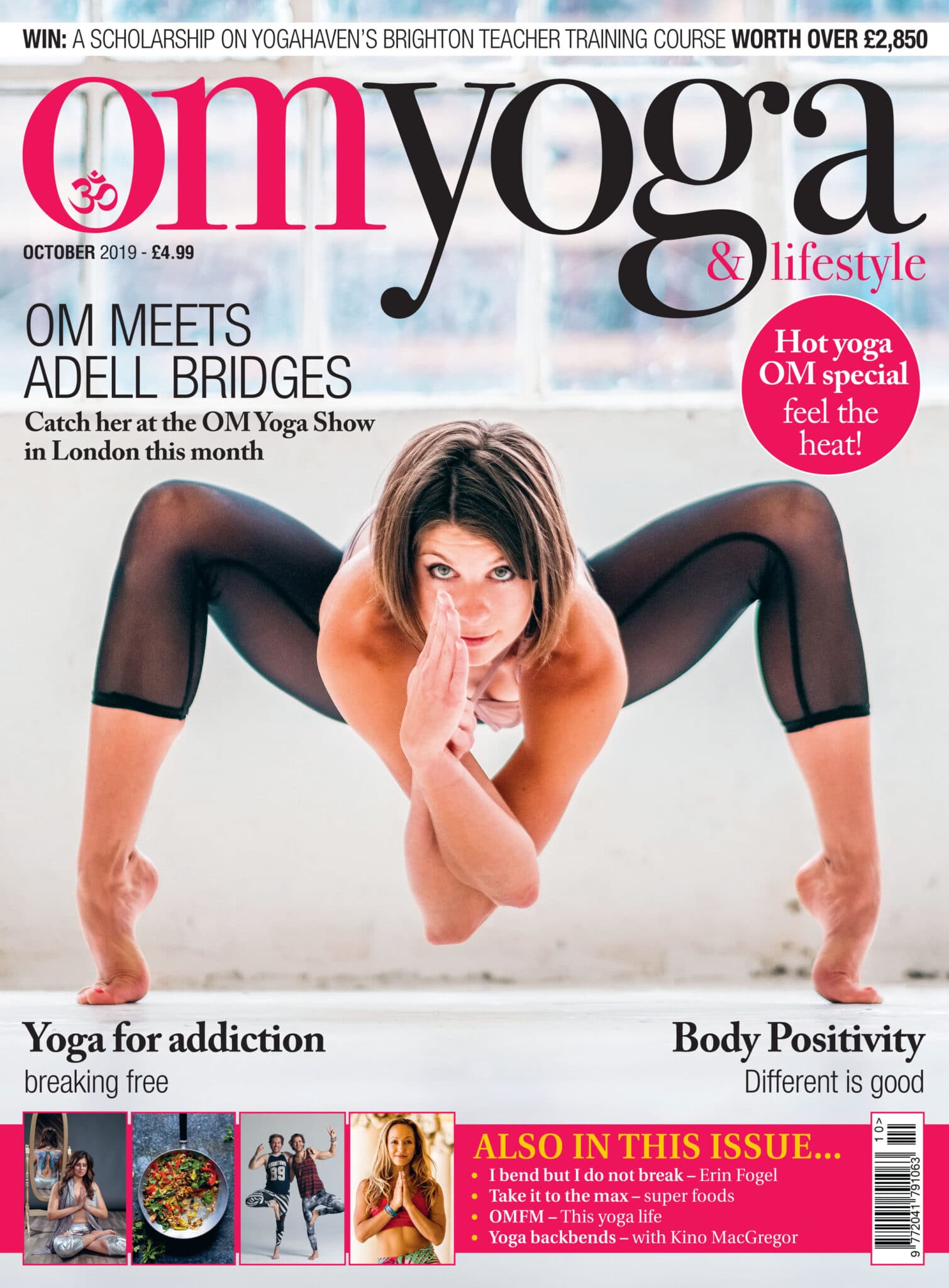
A 360º overview of...
Handstand (Adho Mukha Vrksasana)
With Dr Kiki Morriss
Success in the Handstand is as much a case of positive thinking as it is of strength and balance
This energising pose is a great way to boost your confidence and mood, whilst combining the benefits of an inversion with an arm balance.
Prepare for Handstand by strengthening your arm and shoulder muscles in Chaturanga Dandasana and Downward Dog. Then increase your hip flexibility and strength in Warrior I & Warrior II.
Start by using a wall to support you. In time you will be able to hold the pose freely and may even be able to take a few steps on your hands.
The benefits of this pose:
- The benefits of this pose:
- mproves circulation.
- Builds upper body and core strength.
- Boosts self confidence.
Variations:
- Start in Downward Dog. Bend both your knees and bunny hop into the Handstand. Keep your legs together as you enter the pose.
- Practice a splits position (Hanumasana) as you balance in the Handstand. This is a good preliminary position to try if you are free-standing, before lifting both your legs in the full position.
- Come into Handstand. Bend your knees, arch your back and gradually bring your feet down to your head.
Contraindications:
- Avoid all inversions if you are menstruating.
- Only practice Handstand during pregnancy if you have an established practice.
- Don’t practice Handstand if you have a neck, shoulder, arm or back injury.
- Do not practice if your arms are weak. Practice Downward Dog to strengthen your arms.
- Avoid Handstand if you have high blood pressure.
- If in any doubt, speak to your doctor before practicing Handstand.
MOVING INTO THE POSE
- Start in Downward Dog with your hands shoulder width apart and about 3-5in away from the wall.
- Step one foot forwards with your knee bent.
- Bring weight forwards onto your hands and bring your arms into a more vertical position.
- Lift your back leg up, keeping it straight.
- Use the momentum to follow with your other leg into the pose.
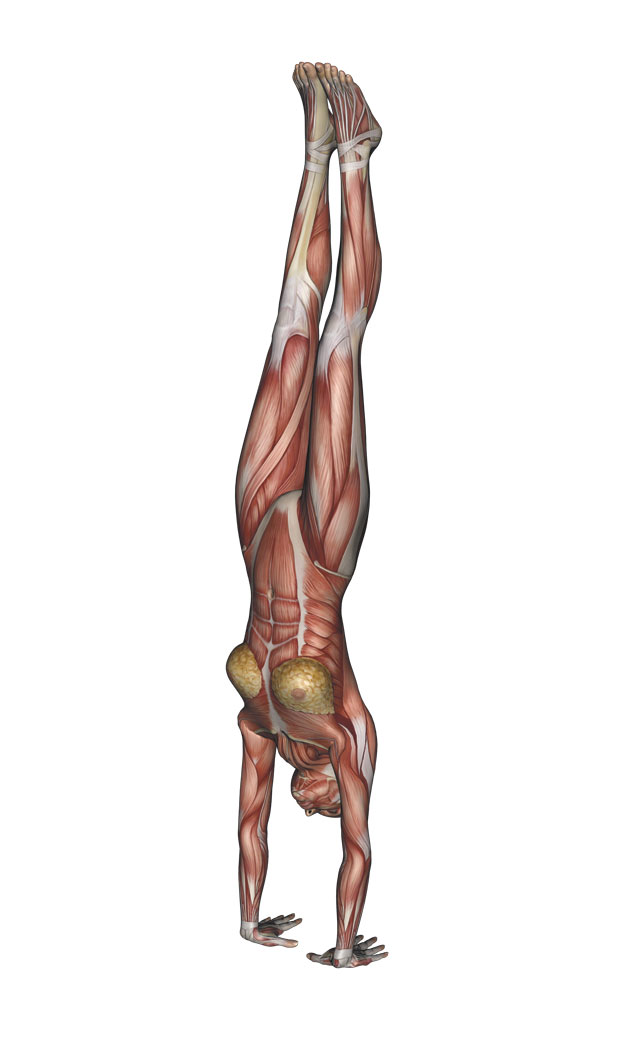
MOVING THROUGH FEAR
- As you turn yourself upside down in Headstand, it is natural to be afraid of falling.
- Practice Mountain pose with your arms reaching up to the sky. Then visualise yourself in exactly this position but upside down in the Handstand. Observe how your mind responds to this visualisation. Practice this until your mind and breath remain steady.
- Initially use the wall to support your legs. As your confidence increases take your feet away from the wall for a moment, so you can feel yourself free-standing.
- Notice if you hold your breath as you come into the pose. Keep breathing and stay focused on where your body is in space.
FOCUS ON YOUR BACK
- Extend your back by using your erector spinae (deep back muscles) and quadratus lumborum.
- Align your vertebral bodies so they are one on top of the other.
- Avoid over arching your lower back.
FOCUS ON YOUR ARMS AND SHOULDERS
- Flex your shoulders over your head using your anterior deltoids.
- Keep your elbows straight by activating your triceps.
- Align your upper arms and forearms.
- Create space for your neck by drawing your shoulders away from your ears using your lower trapezius.
CREATE YOUR FOUNDATION
- Spread your fingers forwards and press the heels of your hands down.
- Spread weight evenly across both your hands.
FOCUS ON YOUR LEGS
- Straighten your legs by contracting your quadriceps. Feel as if you are lifting your kneecaps towards your pelvis.
- Squeeze your legs together by using the adductor muscles on your inner thighs.
FOCUS ON YOUR FEET
- Use your tibialis anterior muscles at the front of your lower legs to dorsiflex your ankles. This will open the soles of your feet towards the sky.
- Create a sense of length and lift through your entire body by imagining your feet are being gently pulled upwards.
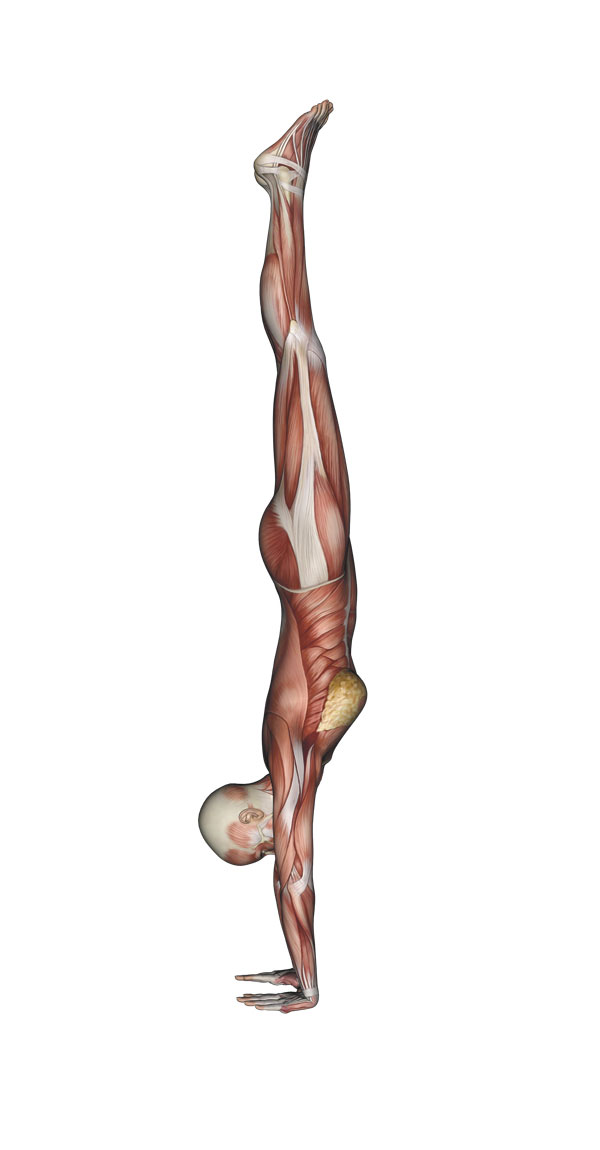
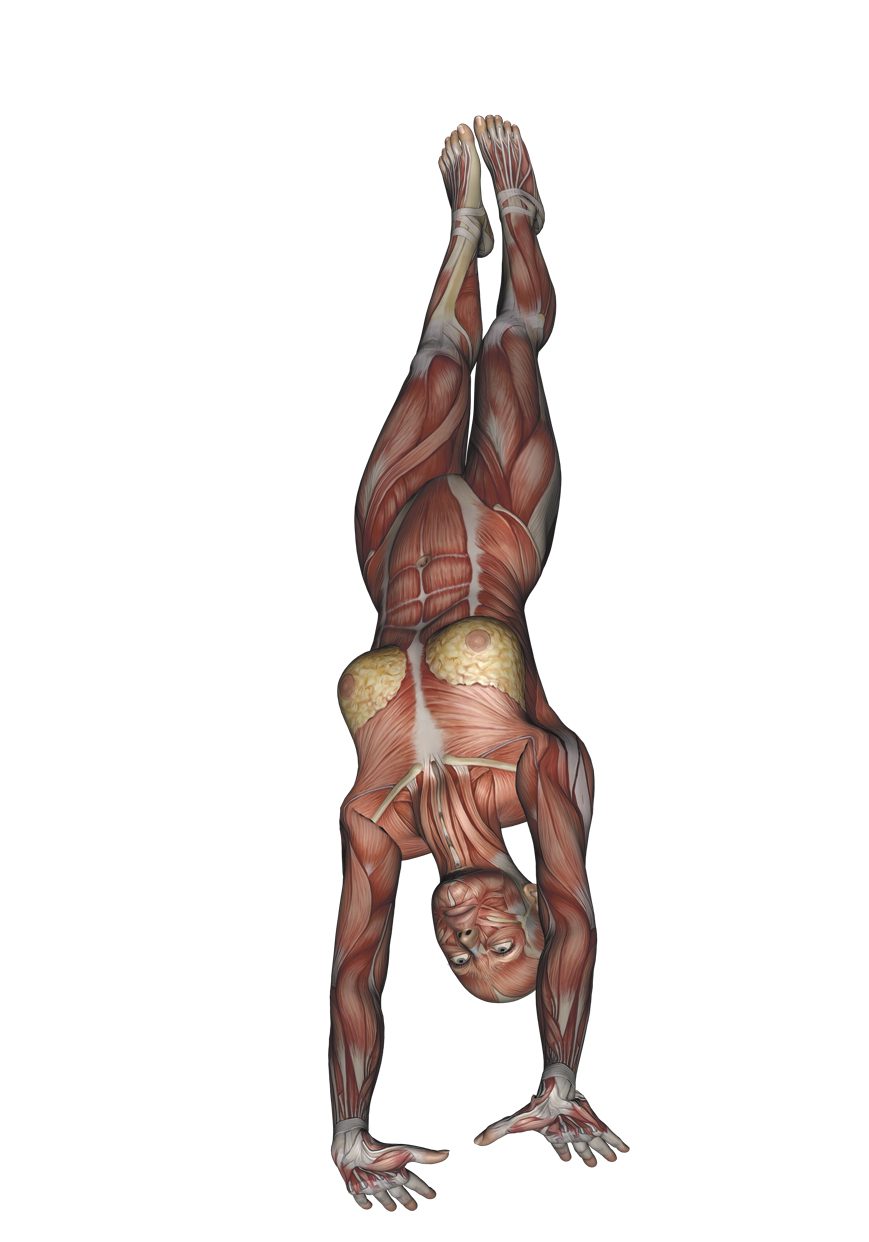
FOCUS ON YOUR PELVIS
- Use your gluteus maximus and psoas, which create opposing forces, to stabilise your hips and pelvis.
- Align your hips over your shoulders.
FOCUS YOUR GAZE
- Gaze softly at a point between your hands and slightly out in front of them. Imagine drawing an equal sided triangle between your hands and your focal point.
- As in all balancing poses, keep your eyes focused on one fixed point.
COMING OUT OF THE POSE
- Lower one leg down at a time with control.
- Rest in Child’s pose for 5-10 breaths.


